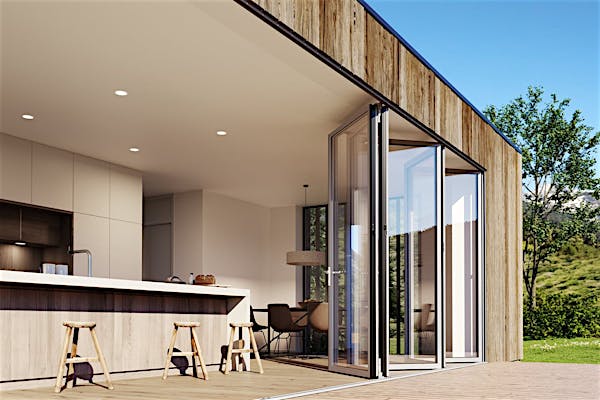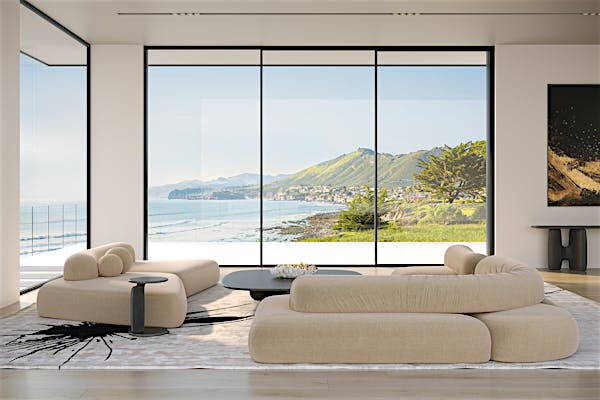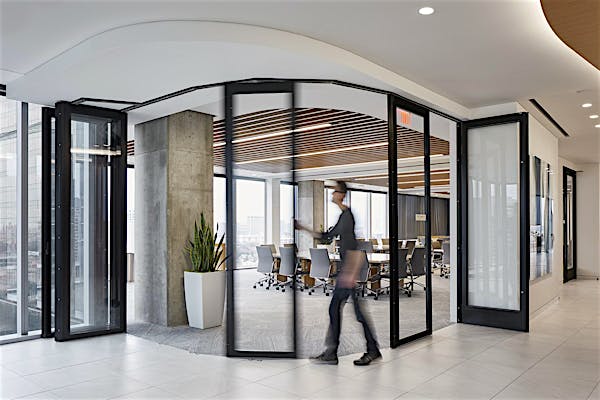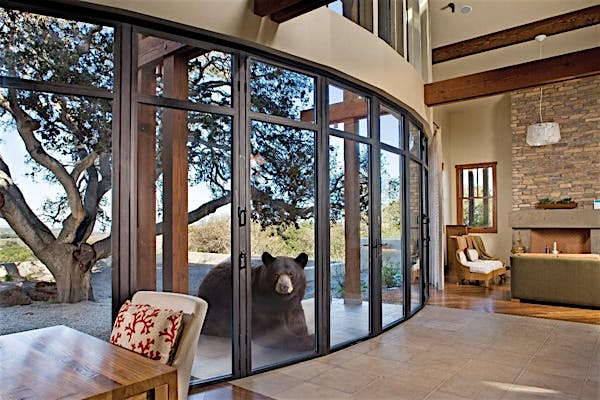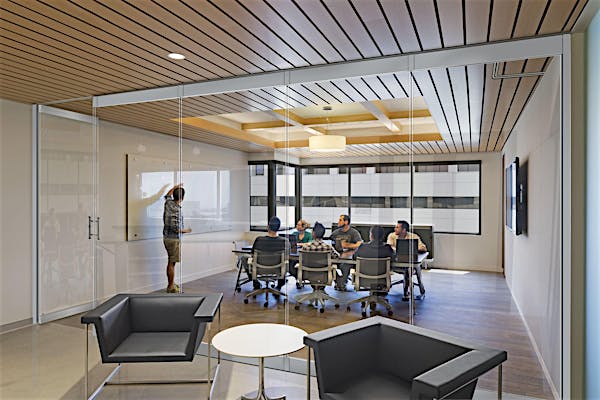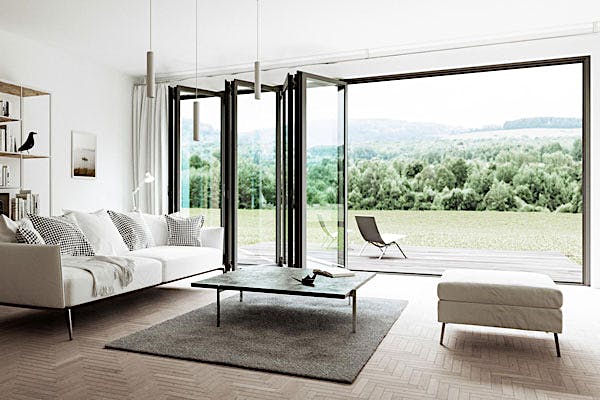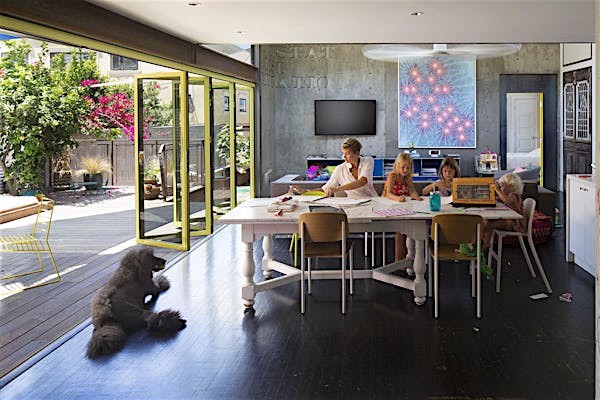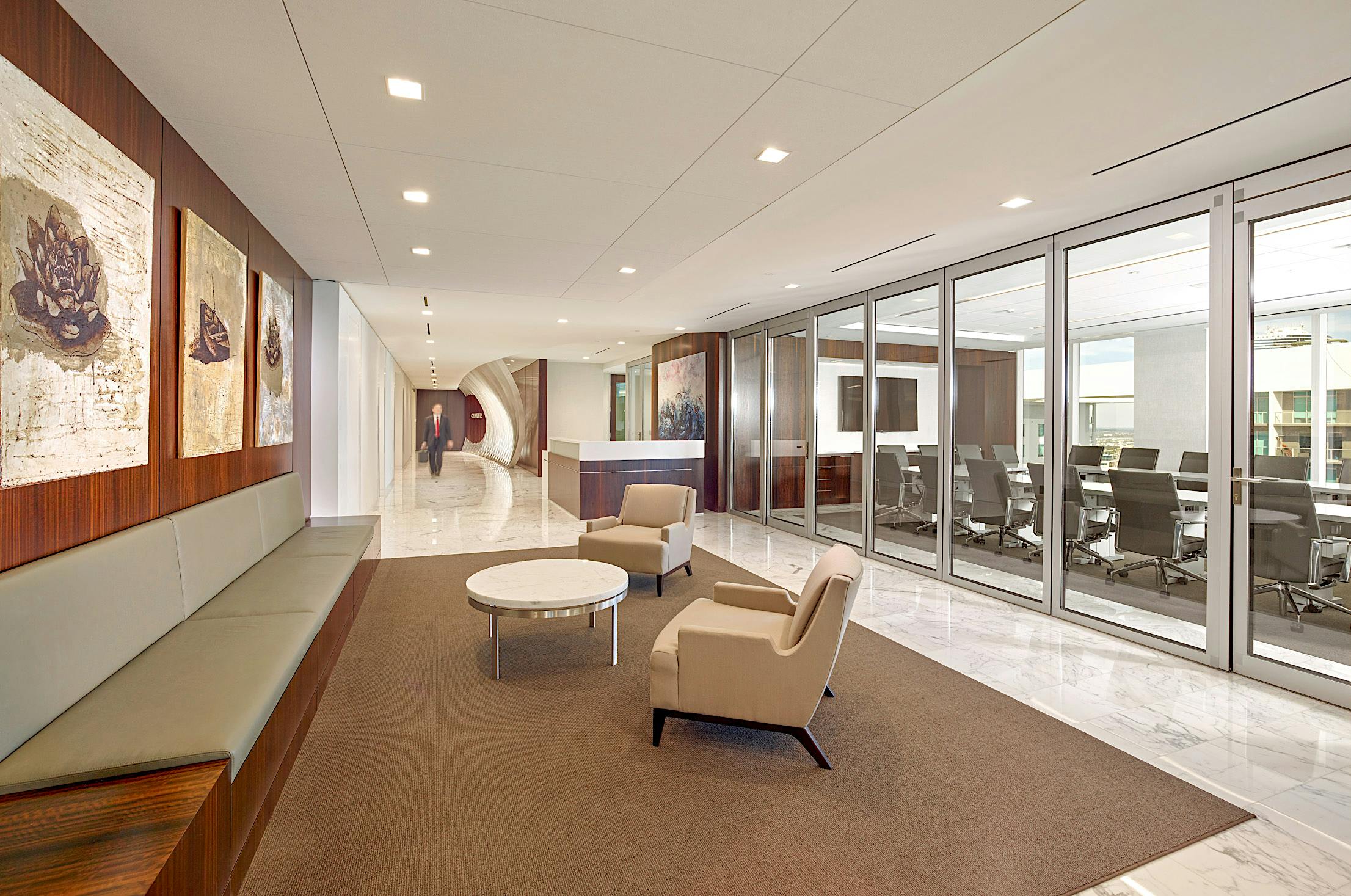
What are the latest law office design trends? Today’s law offices are moving past the conventional dark wood paneling, oversized desks, and enclosed office spaces to embrace flexibility and well-being. Modern firms are rethinking the workplace to support hybrid schedules, collaboration, and employee wellness. The result? A shift toward offices that are more open, efficient, and comfortable. From layout changes to material choices, the following five trends reflect how today’s legal workplaces are evolving and how design-forward features like movable glass doors can enhance the overall experience for employees and clients alike.
Law Office Design Trends: How to Improve the Workplace Experience with Movable Glass Doors
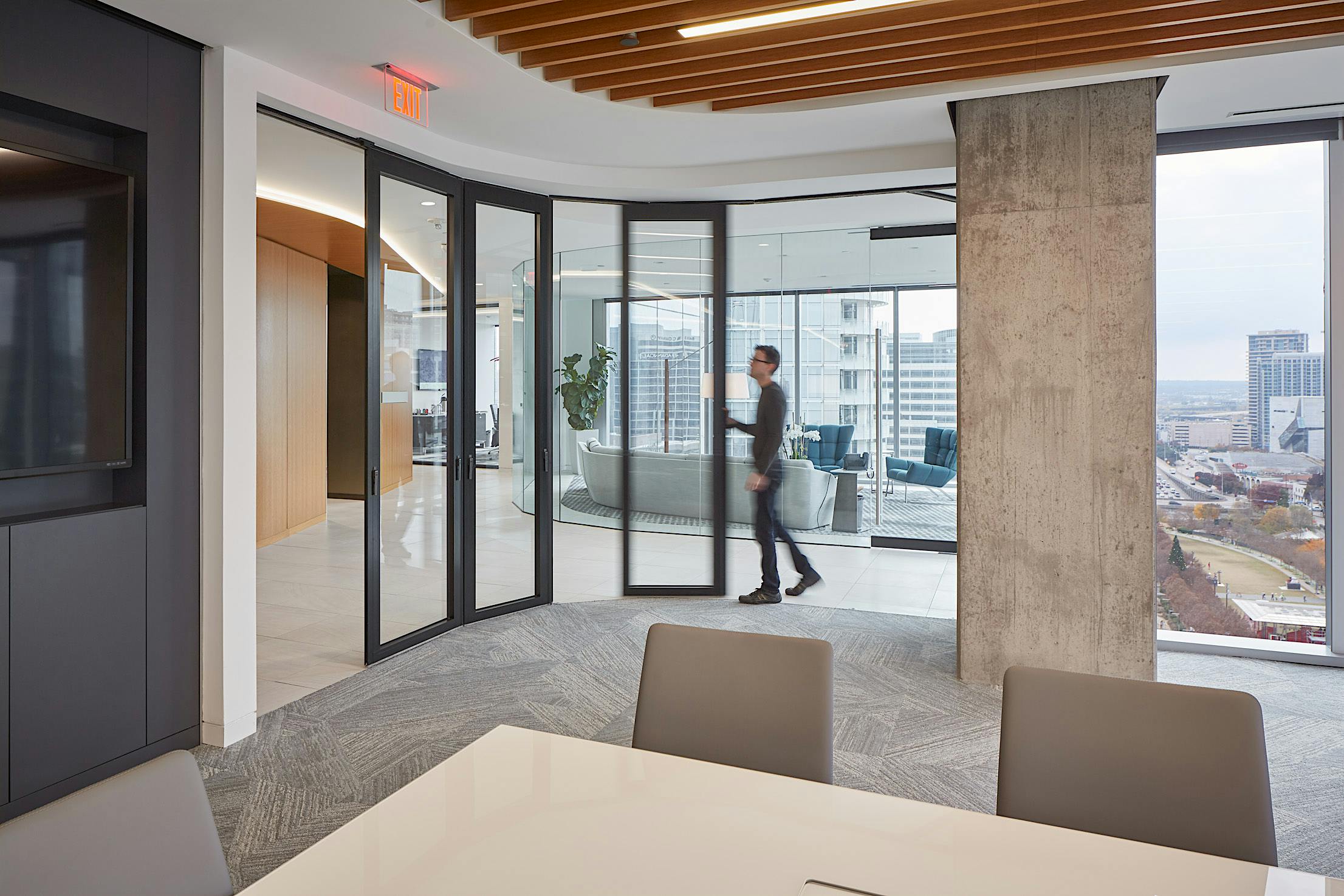
1. A Shift Towards Openness and Adaptability
One of the most notable changes in modern law office design trends is the shift towards open concept floor plans and adaptable spaces. Gone are the endless rows of cubicles and enclosed private offices; instead, workplaces are shifting towards:
- Flexible room configurations that accommodate changing team sizes and functions.
- Incorporating modular elements like movable furniture that can be easily rearranged.
- Using movable glass doors and interior partitions to easily divide large meeting spaces into smaller focus rooms.
This shift allows firms to adapt to changing work patterns, especially in hybrid environments, without disruptions or major renovations. Plus, it allows for more connectivity and productive collaboration with one another.
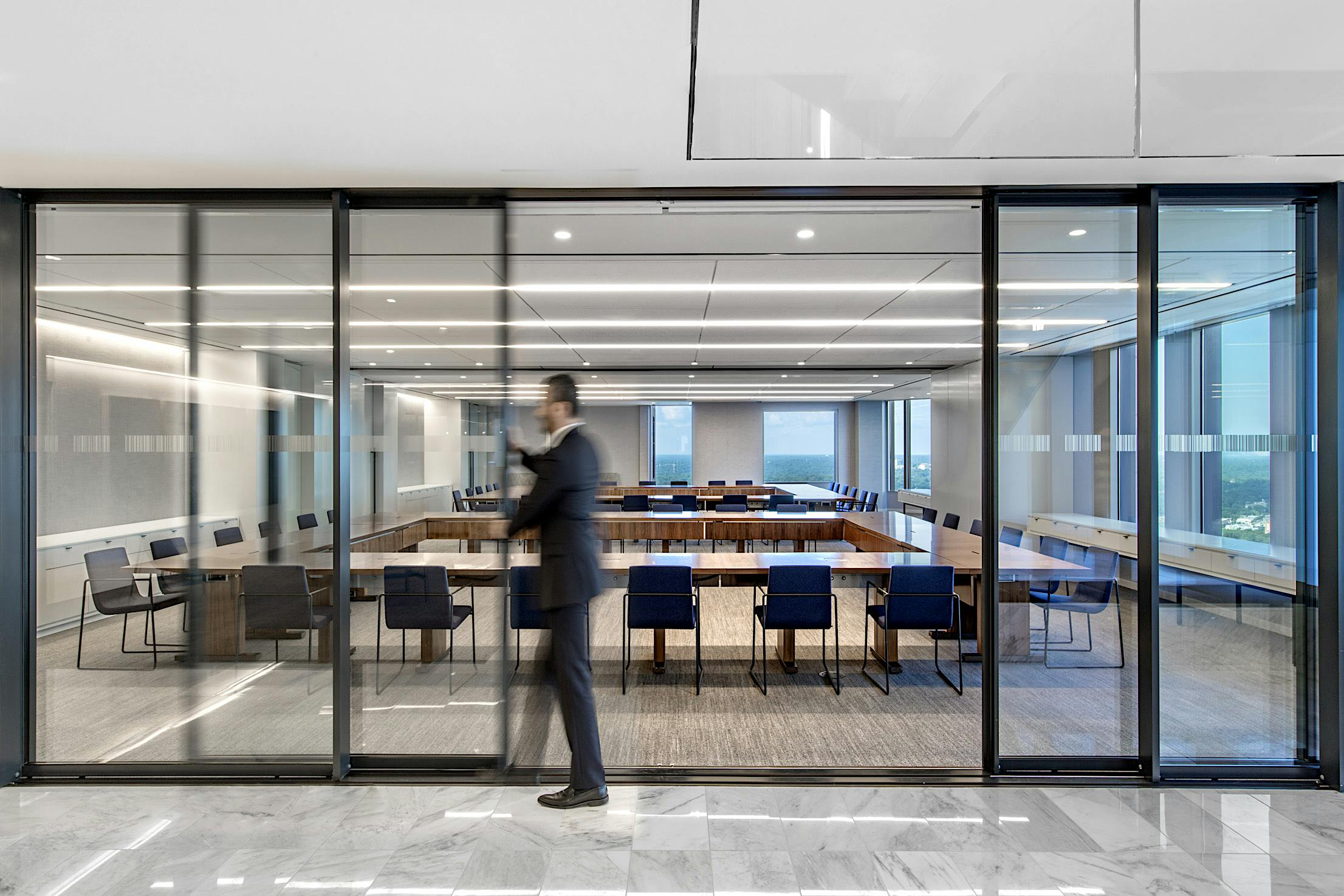
2. Prioritizing Health and Wellness
The legal profession can be quite demanding; therefore, implementing biophilic design elements that support mental health and overall well-being is essential. More and more, we will see law offices with elements like plants, mood-boosting daylight, and even colorful additions like bold furniture and decor. Other key design elements include:
- Maximizing natural light with more windows and dynamic movable glass doors.
- Providing access to outdoor spaces for calming moments of unwind, even if it’s small balconies or rooftops.
- Ensuring proper fresh air ventilation and other stress-reducing elements that promote productivity.
Opening up the legal office to natural elements like fresh air and daylight, which have been proven to enhance wellbeing and productivity, will ensure a healthier work environment that meets contemporary work standards.
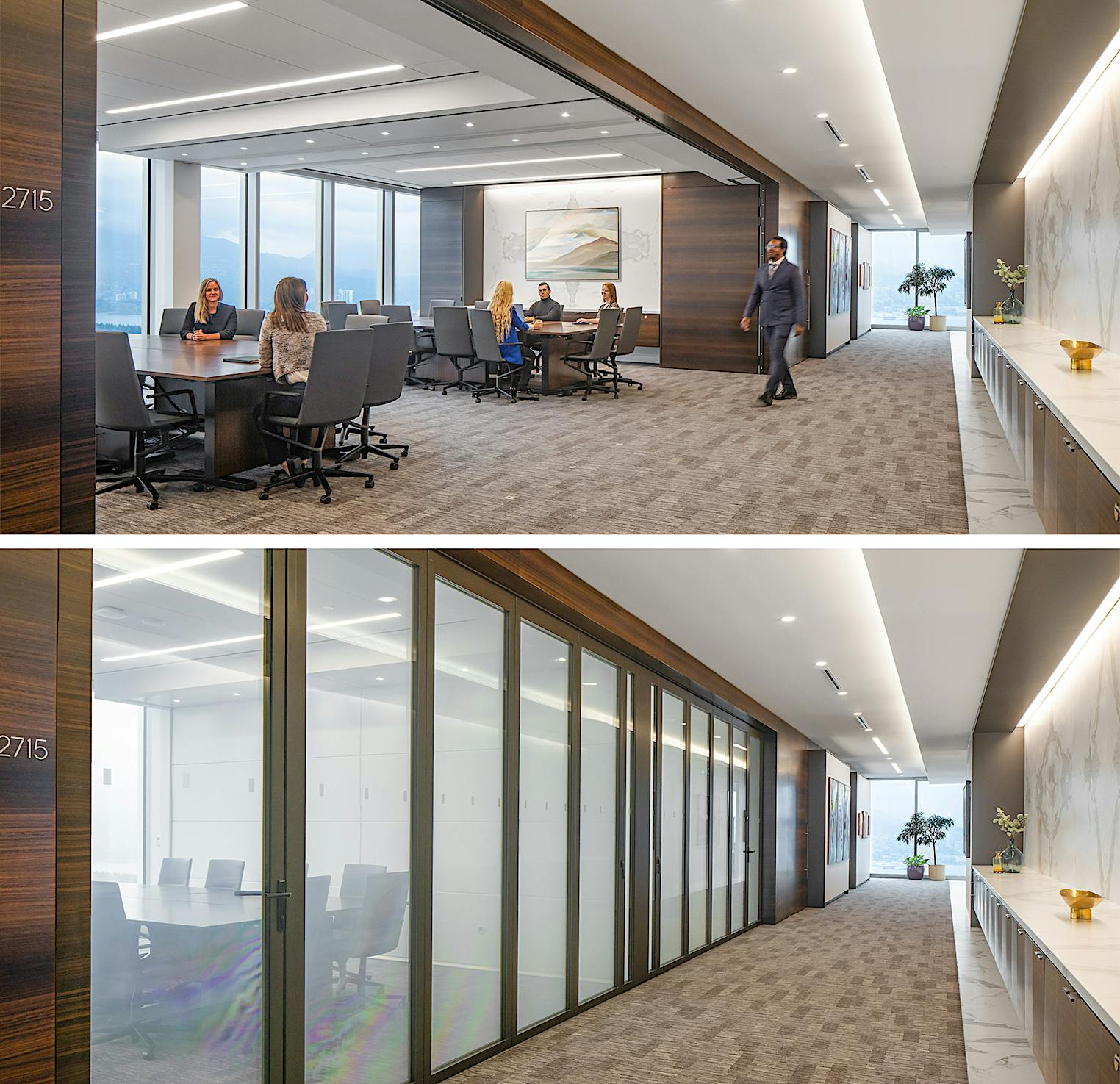
3. Reimagined Privacy and Spatial Separation
Even as layouts become more open, the need for privacy remains essential. Modern law office design trends are making it easier to balance openness with confidentiality while ensuring spaces remain connected and easily accessible. Law firms are rethinking privacy by:
- Using sound-rated glass walls that block noise but with enough transparency to maximize natural light.
- Adding frosted or smart glass, a switchable glass that can change from clear to opaque, for visual privacy when needed—especially in conference rooms or executive offices.
- Opting for movable glass doors that can close for private meetings and open when not in use.
In dynamic office spaces, embracing flexible ways to adapt to the changing needs of the workplace, including privacy, will become essential. Opting for customizable fenestration like NanaWall movable glass systems that can be specified with frosted glass is a plus.
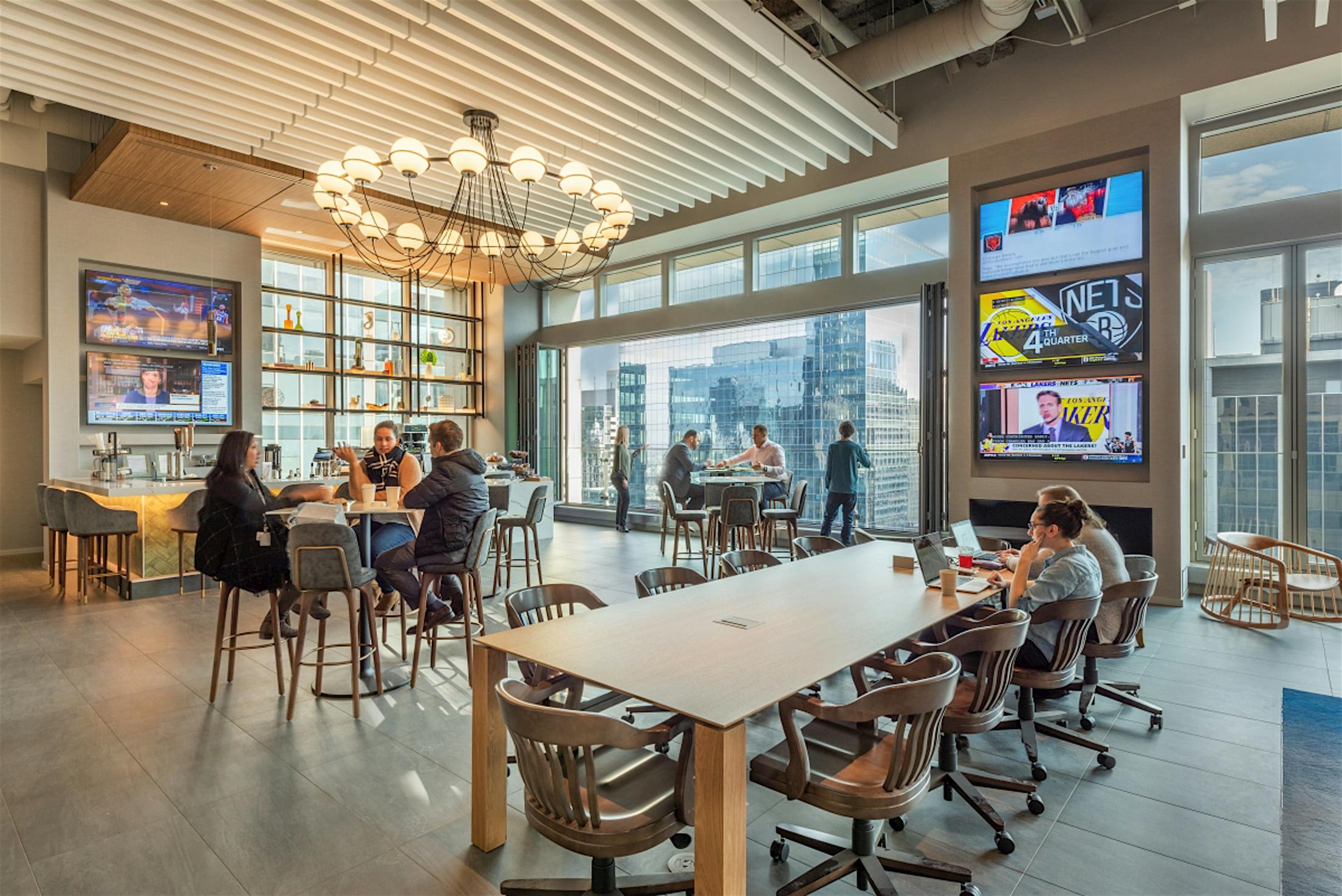
4. Amenities, Amenities, Amenities
Looking for the best way to attract and retain employees? The rise of amenities in the workplace is a trend that continues to grow as employers look for ways to build workplace culture and productivity. Some examples seen in modern office spaces are:
- Break and lounge areas with coffee stations or small kitchens for everyday use.
- Outdoor areas like terraces, patios, or rooftop decks offer fresh air and a change of scenery during the day.
- Multi-purpose spaces that can open up for events or close off for focused meetings using movable glass doors.
According to a Gensler survey, having a variety of workspaces translates into a better workplace experience for employees. But more than just spaces for coworkers to connect and unwind, these amenities are also key when building relationships or meeting with clients.
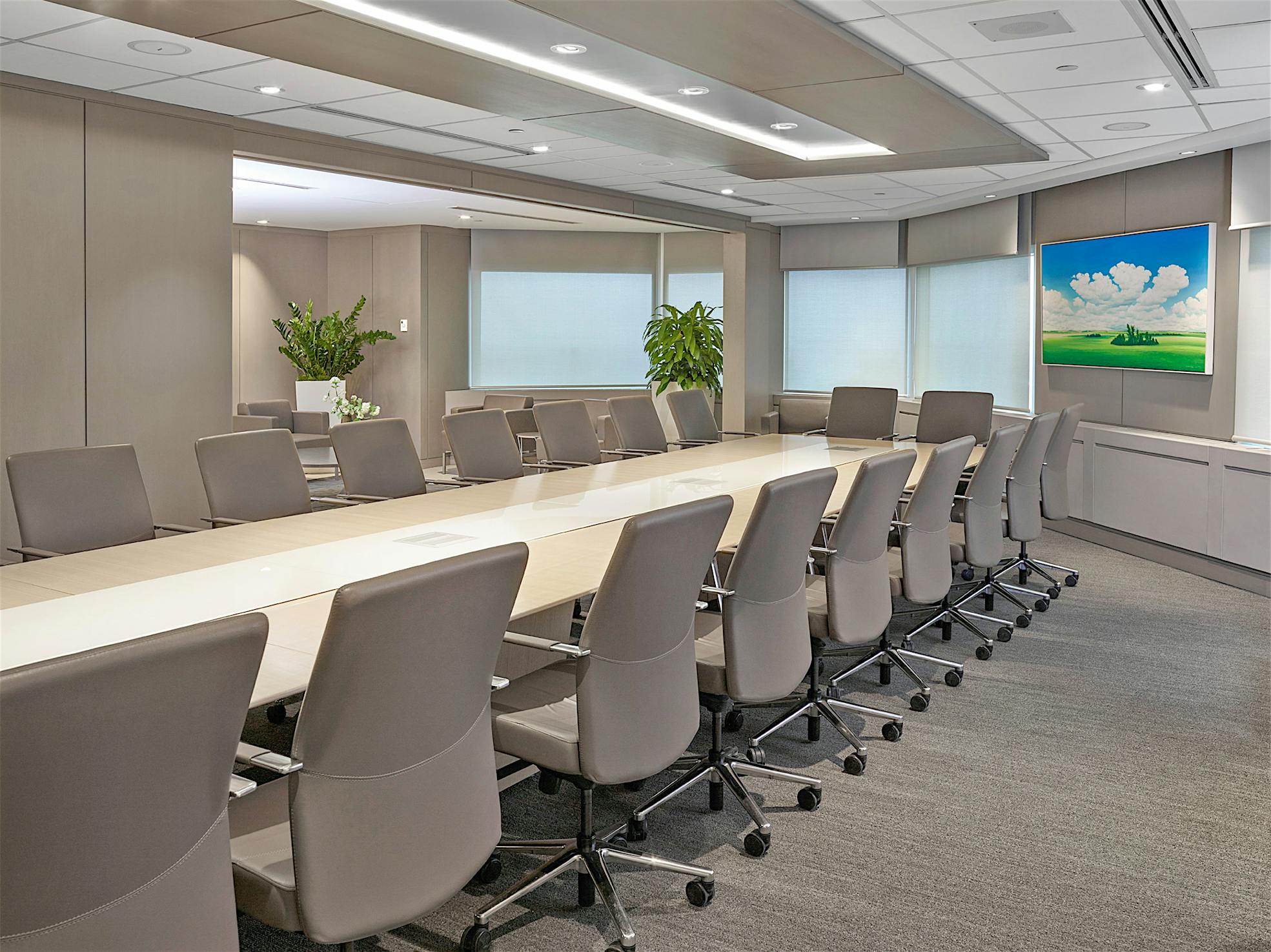
5. Personalizing Spaces with Color
While traditional law offices leaned heavily on dark wood and conservative tones, newer designs are embracing a lighter, more modern palette. The goal is to create environments that feel fresh, professional, and reflective of a firm’s unique brand. Designers are refreshing law office interiors by:
- Using neutral tones, light-colored wood, soft textures, and matte finishes in place of heavy wood.
- Adding pops of color throughout the office in the form of accent walls, carpets, and bold furniture.
- Customizing or branding windows, doors, and even movable glass doors with various colors or sustainable wood options.
More than a mere branding choice, adding colorful elements to any office design instantly transforms an otherwise gloomy space into a bright, engaging workplace environment.
How Movable Glass Doors Improve Law Office Design
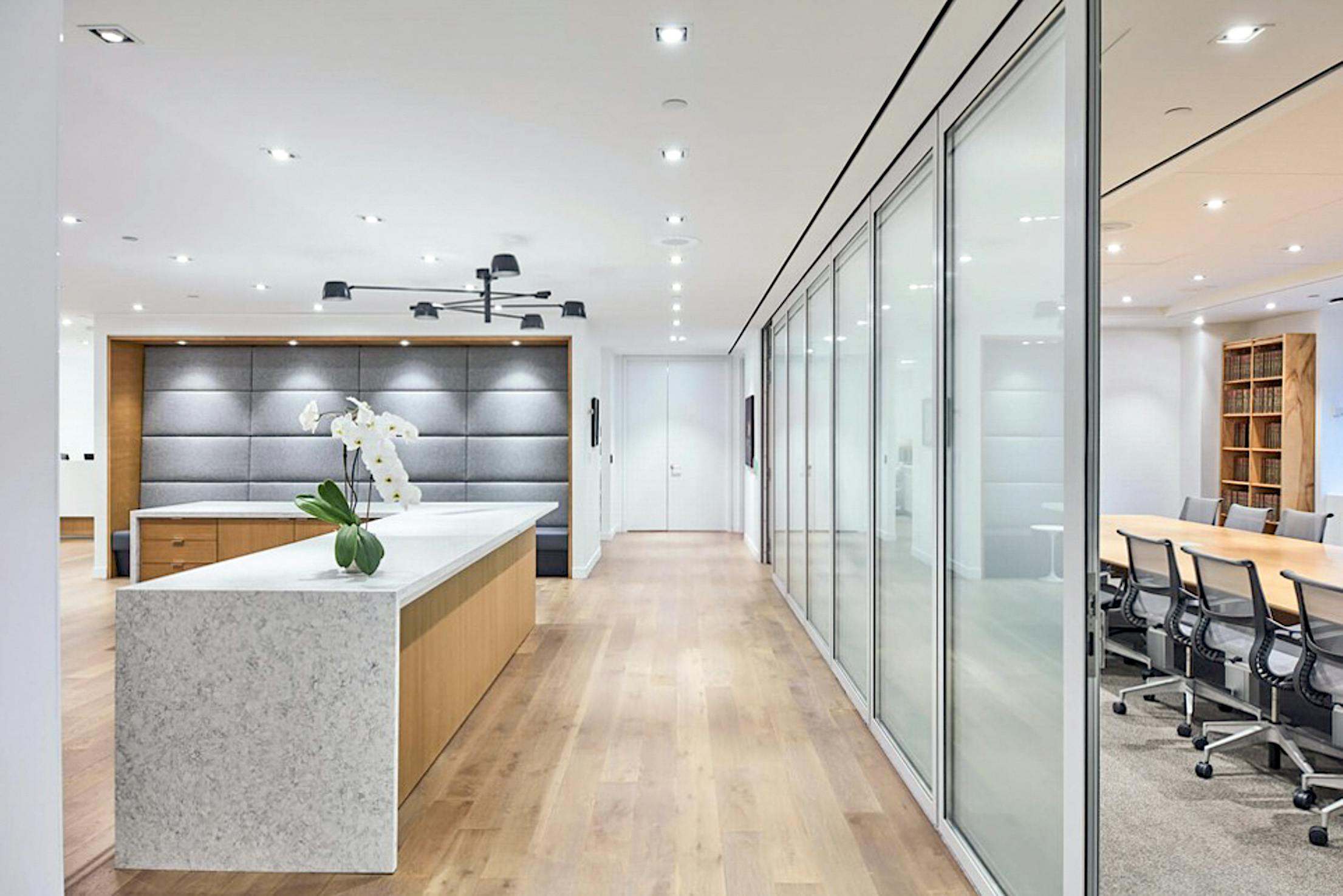
There’s one thing contemporary law office design trends have in common: flexibility. Whether it’s reconfiguring space for different uses, enhancing natural light, or balancing openness with privacy, today’s law firms need environments that can adapt while optimizing productivity and well-being.
NanaWall movable glass doors support this evolution by offering versatile, design-forward solutions that meet the practical needs of modern legal workspaces. These systems offer a comprehensive program of products that satisfy the need for flexibility and transparency while maintaining the confidentiality of private information. In addition, these systems:
- Make Workspaces More Flexible: Movable glass doors make it easy to convert large rooms into smaller offices or meeting spaces, and just as easily open them back up for group collaboration or firm-wide events.
- Maintain Openness While Ensuring Privacy: Glass systems offer the best of both worlds: openness and daylight, with options like acoustically rated systems or frosted panels to provide privacy when it’s needed.
- Maximize Daylight Across the Floorplan:Unlike solid walls, glass lets natural light flow throughout the office, helping reduce the need for artificial lighting and creating a more pleasant, productive atmosphere.
- Support Wellness Through Light and Air:Connecting interior spaces to outdoor patios or balconies with operable glass doors gives staff access to fresh air and natural views, both important for reducing stress and improving focus.
- Create a Clean, Modern Aesthetic:Glass wall systems add a sleek, professional look that communicates transparency, adaptability, and even ADA-compliance with barely-there floor tracks.
Check out this e-book for real-life examples of how law offices leverage NanaWall movable glass doors!
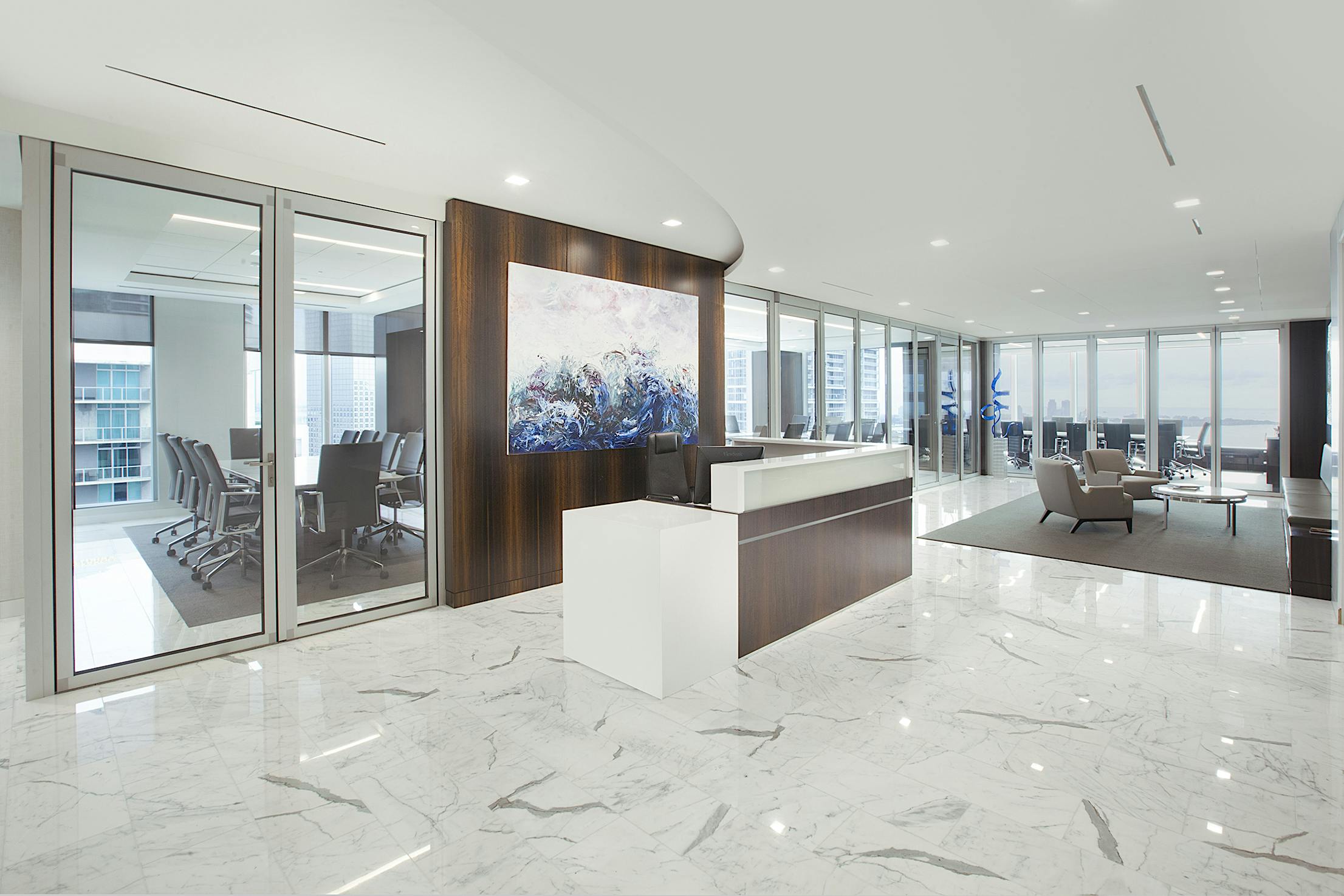
Final Thoughts
Which of these law office design trends will you be implementing? Whether you’re redesigning a single meeting room or planning a complete office renovation, each of these strategies supports a workplace that’s more adaptable, comfortable, and aligned with modern workplace standards.
By embracing flexible layouts, wellness-driven design, and smart architectural solutions like movable glass doors, firms can create environments that reflect their values while meeting the practical needs of both employees and clients. With the right design choices, the law office becomes more than a workspace but rather a place for collaboration and productivity.
Discover how other modern offices are redefining the workplace with NanaWall opening glass doors in these inspiring project stories!
